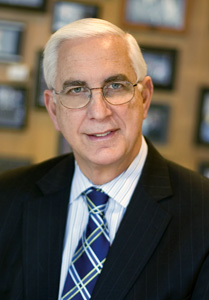The future of medicine is inextricably linked to engineering. We see evidence of this trend today as the two disciplines increasingly share common goals and become integrated. While I can’t predict with certainty what the next medical “breakthroughs” will be, I can say with a fair degree of confidence that many will occur because of the innovative application of the many disciplines of engineering.
Already, the Whiting School of Engineering is leading the way in many medical priority areas-building on a five-decade legacy of innovation in our Biomedical Engineering Department-in close collaboration with our people at Medicine. Engineering researchers in the Systems Institute, for instance, are working hand in glove with two of our “game-changers” at Medicine-Ted DeWeese in Radiation Oncology, who is imaging tumors for inclusion in a data base that is then used to plan the optimum therapy for patients with similar tumors; and Peter Pronovost, director of the new Johns Hopkins Armstrong Institute for Patient Safety and Quality, who is partnering with industry to design the intensive care unit of the future.

Johns Hopkins School of Medicine since 1997, retired on June 30.
Other important collaborations center on the promise of individualized medicine. In some respects, it remains the holy grail of medicine. But it relies on mountains of data that, currently, we don’t really know how to use effectively. Computational medicine will play a pivotal role in solving this challenge. Whiting School engineers are using such data to improve robotic surgery, for example, by programming robots to replicate a surgeon’s hand movements inside the body. Other Hopkins engineers are developing models of the human heart that simulate the heart’s behavior-from the molecular level to the entire organ. The model serves as a powerful predictor of future cardiac electrophysiological function over time.
An area of synergy that I’m very excited about taps into ongoing advances in imaging technology. By combining biomedical imaging science with computational modeling, we can now infer, noninvasively, the structural and functional properties of complex biological systems and neural circuits at the molecular level. Led by researchers at the Whiting School’s Medical Image Analysis division, these advances are already providing new insights into a wide range of neuropsychiatric illnesses-including schizophrenia, depression, epilepsy, dementia of the Alzheimer type, and Parkinson’s.
Other researchers are thinking small: by exploiting the potential of nanobiotechnology. The Johns Hopkins Institute for NanoBioTechnology unites more than 200 researchers from across Johns Hopkins in a quest to develop nanoscale devices that detect cancer cells, report relevant diagnostic information, and deliver chemotherapeutic agents or therapeutic genes directly into the malignant cells.
While I remain optimistic about the intertwined futures of medicine and engineering, we must acknowledge that we face very real impediments. NIH funding-which has been the principal driver in fueling discoveries, innovation, and interdisciplinary partnerships-continues to be flat and may even be cut, which would put the entire research enterprise in this nation at grave risk.
Secondly, we must work aggressively to capitalize on our intellectual property through technology transfer. This will require greater and more fruitful partnerships with private industry and the internal and external resources to efficiently and effectively bring these products to market.
And finally, without adequate support from the business community, and support from the state in the form of tax incentives or outright grants, our forward progress may be seriously threatened.
Biological systems have inherent limitations. Few such limitations exist in the imagination and capabilities of engineers. They are used to doing the seemingly impossible. I can say with assurance that ongoing advances in molecular and cell biology, medical informatics, and engineering coupled with the need for an interdisciplinary approach to solving complex biomedical problems will ensure the continuing role for engineering in medicine-with scientists at Johns Hopkins leading the way.
Edward D. Miller-the Frances Watt Baker, MD, and Lenox D. Baker Jr., MD, Dean of the Medical Faculty and CEO of Johns Hopkins Medicine-retired on June 30.




